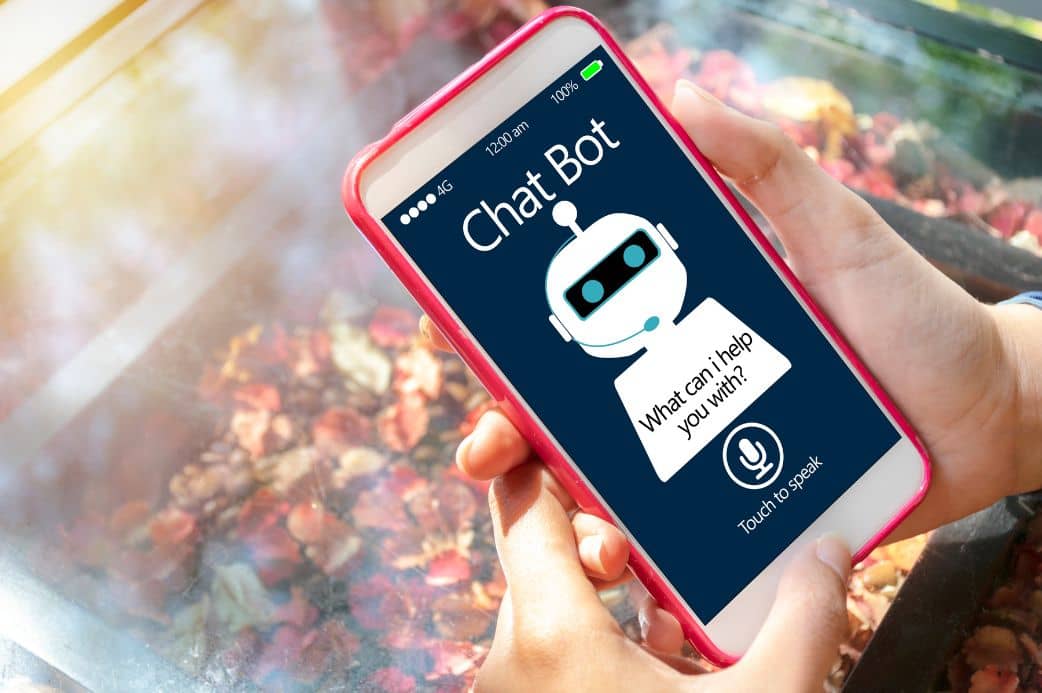In an era where technology is evolving at an exponential pace, one of the most fascinating developments is the rise of SuperBots. These sophisticated AI-powered conversational agents are pushing the boundaries of human-computer interaction and redefining the way we engage with machines. In this blog, we delve into the world of SuperBots, exploring what they are, how they work, and the impact they’re having on various aspects of our lives.
Understanding SuperBots: Beyond Traditional Chatbots
Chatbots have been around for quite some time, offering automated responses to user queries. However, SuperBots take this concept to a whole new level. They are advanced, intelligent, and capable of engaging in complex and context-aware conversations that closely resemble human interactions. Unlike traditional chatbots, which often rely on predefined scripts and rules, SuperBots harness the power of artificial intelligence and machine learning to understand natural language, adapt to context, and generate responses that are coherent and relevant.
How SuperBots Work: The Inner Machinery
At the heart of SuperBots are sophisticated neural network architectures, particularly variants of the Transformer model, such as GPT (Generative Pre-trained Transformer). These models are trained on vast amounts of text data from the internet, allowing them to learn the intricacies of language, grammar, context, and even human-like reasoning abilities. GPT-based SuperBots consist of millions (or even billions) of parameters, enabling them to generate remarkably coherent and contextually relevant responses.
During a conversation, SuperBots analyze the input they receive, process it through their neural networks, and generate responses based on the patterns they’ve learned from their training data. The more data they’re exposed to, the better they become at mimicking human-like conversation. They can also incorporate user feedback to continuously refine their performance.
Applications of SuperBots
The potential applications of SuperBots are vast and span across various industries:
- Customer Support: SuperBots are becoming increasingly popular in customer support departments. They can handle a wide range of customer inquiries, offering instant responses and assistance around the clock, which leads to improved customer satisfaction.
- Virtual Assistants: Personal virtual assistants like Siri, Google Assistant, and Alexa are examples of SuperBots that have made their way into our daily lives. They can provide information, set reminders, manage schedules, and even perform tasks like sending messages or making calls.
- Education: SuperBots have the potential to revolutionize education by offering personalized learning experiences. They can answer student questions, provide explanations, and assist with homework assignments.
- Healthcare: In the medical field, SuperBots can offer preliminary information about symptoms, medications, and treatments. They can also help streamline administrative tasks in healthcare facilities.
- Content Generation: SuperBots are being used to generate content for various purposes, including writing articles, product descriptions, and marketing copy. However, ethical considerations are important in this context to ensure transparency about the source of the content.
- Language Translation: SuperBots equipped with translation capabilities can bridge language barriers, enabling effective communication between people who speak different languages.
Challenges and Considerations
Despite their impressive capabilities, SuperBots are not without challenges:
- Ethical Concerns: There are concerns about the ethical use of SuperBots, including the potential to spread misinformation or generate harmful content.
- Bias and Fairness: SuperBots can inadvertently replicate biases present in their training data, which could perpetuate stereotypes and inequalities.
- Data Privacy: Conversations with SuperBots can involve sensitive information, raising questions about data privacy and security.
- Human Interaction: As SuperBots become more convincing, there’s a risk of blurring the lines between human and AI interaction. It’s crucial to maintain transparency about their AI nature.
The Future Is Conversational
SuperBots are undeniably transforming the way we interact with technology. With their ability to hold natural and intelligent conversations, they’re poised to revolutionize customer service, education, healthcare, and more. As the field of AI continues to evolve, it’s important to strike a balance between the benefits of SuperBots and the ethical considerations that come with their use. Whether they become our trusted assistants or simply help us navigate the digital realm, SuperBots are undoubtedly shaping the future of human-computer interaction.
SuperBots: Pioneering a New Era of Human-Computer Interaction
As we dive deeper into the world of SuperBots, it’s clear that these AI-powered conversational agents are not just a passing trend; they’re shaping the future of human-computer interaction in profound ways. Let’s explore some of the remarkable developments and potential avenues for SuperBots in the coming years.
Enhanced Personalization
SuperBots are capable of learning from interactions and adapting to individual users’ preferences and needs. This ability to provide personalized recommendations, advice, and assistance can lead to more meaningful and relevant interactions. Imagine having a virtual fitness coach that not only tracks your progress but also understands your fitness goals and tailors workouts accordingly.
Emotional Intelligence
One of the most exciting aspects of SuperBots is their potential to develop emotional intelligence. While they are not sentient beings, they can be programmed to recognize and respond to emotional cues in conversations. This opens doors to applications like mental health support, where SuperBots can provide a listening ear and offer resources to users experiencing stress, anxiety, or depression.
Collaboration and Creativity
SuperBots could become invaluable partners in collaborative tasks. They can assist in brainstorming sessions, provide creative suggestions, and even co-author content. This could prove particularly useful for writers, designers, and other creative professionals looking for inspiration and feedback.
Multilingual Communication
Language barriers often limit global communication and collaboration. SuperBots with advanced language translation capabilities could revolutionize cross-cultural interactions by providing real-time translations, enabling seamless communication between speakers of different languages.
Learning Companions
With the rise of online learning, SuperBots could serve as interactive learning companions. They could assist students with explanations, offer additional resources, and adapt to individual learning paces and styles. This personalized approach could enhance engagement and improve educational outcomes.
Ethical Considerations and Regulation
As SuperBots become more sophisticated, it’s crucial to address ethical concerns surrounding their use. Regulation and guidelines are needed to ensure transparency, accountability, and responsible deployment. Measures should be in place to prevent misuse, such as generating fake news or engaging in harmful behaviors.
Pushing the Boundaries of AI
SuperBots are pushing the boundaries of what AI can achieve. Their development necessitates advancements in natural language understanding, context recognition, and even commonsense reasoning. Progress in these areas not only benefits SuperBots but also contributes to the broader field of AI research.
Humanizing Technology
While SuperBots are not humans, their conversational abilities and empathetic features are making technology feel more human-like. This humanization of technology can lead to increased user acceptance and comfort in interacting with AI systems.
Continuous Learning and Improvement
SuperBots thrive on data and user interactions. The more they interact, the better they become at understanding human nuances and delivering accurate responses. This continuous learning cycle ensures that they remain up-to-date with current trends and information.
Redefining Workflows
SuperBots are poised to change the way we work and interact with digital systems. From customer service to content creation, they have the potential to streamline processes and free up human resources for more strategic and creative tasks.
Conclusion
SuperBots are not just chatbots with a new name; they represent a significant leap in the capabilities of AI-driven conversational agents. Their potential to transform industries, enhance personal experiences, and foster innovation is immense. However, along with the excitement, it’s essential to approach their development and deployment with ethical considerations, ensuring that SuperBots contribute positively to society while minimizing potential pitfalls. As we move forward, SuperBots will continue to redefine the boundaries of human-computer interaction and lead us into an era where intelligent conversations with machines are the new norm.
Frequently Asked Questions (FAQs) about SuperBots
Q. What are SuperBots?
SuperBots are advanced AI-powered conversational agents that use artificial intelligence and machine learning to engage in complex, natural language conversations with users. Unlike traditional chatbots, SuperBots can understand context, generate coherent responses, and adapt their interactions based on user input.
Q. How do SuperBots work?
SuperBots are built on sophisticated neural network architectures, often based on models like GPT (Generative Pre-trained Transformer). These models are trained on vast amounts of text data, allowing them to learn language patterns and context. During interactions, SuperBots process user input through their neural networks to generate relevant and coherent responses.
Q. What makes SuperBots different from traditional chatbots?
While traditional chatbots rely on predefined scripts and rules, SuperBots leverage advanced AI algorithms to understand and respond to natural language. They are context-aware, capable of holding meaningful and dynamic conversations, and continuously improve through exposure to more data.
Q. What are some applications of SuperBots?
SuperBots have a wide range of applications, including customer support, virtual assistants, education, healthcare, content generation, and language translation. They can also assist with creative tasks, enhance personalization, and potentially develop emotional intelligence.
Q. Can SuperBots replace human customer support agents?
SuperBots are increasingly being used in customer support to handle routine inquiries and provide instant responses. However, they may not fully replace human agents, as complex or emotionally charged issues may require human empathy and understanding.
Q. How do SuperBots learn and improve?
SuperBots learn from the vast amount of data they are trained on, continually refining their responses based on user interactions. They can also incorporate user feedback to enhance their performance over time.
Q. What ethical concerns are associated with SuperBots?
There are ethical concerns regarding the potential for SuperBots to spread misinformation, amplify biases present in training data, and invade user privacy. Responsible development, transparency, and regulation are crucial to address these concerns.
Q. Can SuperBots understand emotions in conversations?
While SuperBots can be programmed to recognize emotional cues in conversations, they don’t experience emotions themselves. They can respond to emotional language and provide relevant information or support.
Q. How can SuperBots be used in education?
SuperBots can serve as virtual learning companions, offering explanations, resources, and personalized assistance to students. They can adapt to individual learning styles and paces, enhancing the learning experience.
Q. What’s the future of SuperBots?
The future of SuperBots involves enhanced personalization, emotional intelligence, improved collaboration, and further integration into various aspects of our lives. Continued advancements in AI will likely lead to more sophisticated and capable SuperBots.
Q. Are SuperBots considered sentient or conscious beings?
No, SuperBots are not sentient or conscious beings. They are advanced algorithms designed to mimic human-like conversation and behavior based on their training data. They lack true consciousness or awareness.
Q. How can I ensure the security of my data when interacting with SuperBots?
Developers of SuperBots should prioritize data security and privacy. It’s important to use reputable platforms and ensure that data is encrypted and handled responsibly. Users should also exercise caution when sharing sensitive information during interactions.
Q. Can SuperBots create their own responses without any human input?
SuperBots generate responses based on the patterns they’ve learned from training data. While they can generate text autonomously, the initial training and supervision come from human input. Ongoing human oversight is necessary to ensure responsible and accurate interactions.
Q. How do SuperBots handle offensive or inappropriate content?
SuperBots can be programmed to filter and avoid generating offensive or inappropriate content. Developers implement moderation mechanisms to prevent the dissemination of harmful or objectionable information.
Q. Are there any limitations to SuperBots’ capabilities?
SuperBots can sometimes provide incorrect or nonsensical responses, particularly if the input is ambiguous or outside the scope of their training data. They may also struggle with highly specialized or technical topics that require domain-specific expertise.











